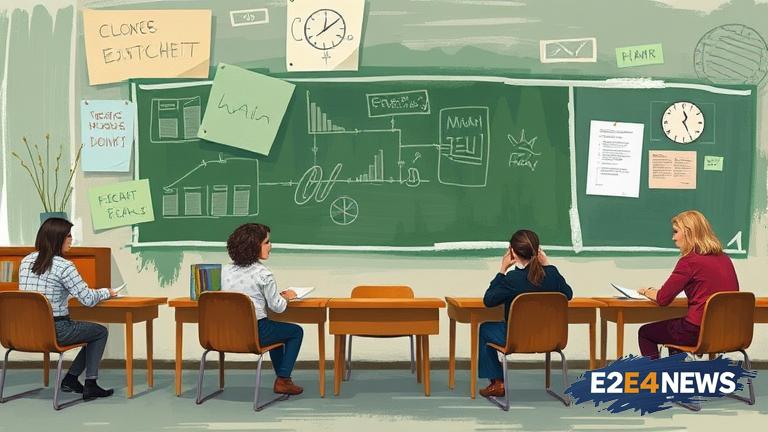The recent controversy surrounding teacher transfer processes in the education service has sparked widespread debate and criticism. Many are calling for an overhaul of the system, citing numerous flaws and inefficiencies that are negatively impacting educators and the quality of education as a whole. At the heart of the issue is the perceived unfair treatment of teachers, who are often transferred to new schools without adequate notice or consideration for their personal and professional circumstances. This can lead to significant disruptions in their lives, including relocation, changes in family dynamics, and impacts on their mental and physical health. Furthermore, the transfer process is often shrouded in mystery, with little transparency or accountability, leaving teachers feeling powerless and uncertain about their futures. The lack of clear guidelines and criteria for transfers has also led to allegations of favoritism and bias, with some teachers being transferred multiple times while others remain in the same position for years. The education service has been accused of failing to prioritize the needs and well-being of its teachers, instead focusing on administrative convenience and bureaucratic expediency. This has resulted in a lack of trust and confidence in the system, with many teachers feeling undervalued and unappreciated. The situation is further complicated by the fact that teacher transfers can have significant impacts on student learning outcomes, as the loss of experienced and effective educators can disrupt the educational environment and lead to decreased academic achievement. In addition, the constant turnover of teachers can also lead to difficulties in maintaining continuity and consistency in the curriculum, as new teachers may have different teaching styles and approaches. The education service has a responsibility to ensure that its transfer processes are fair, transparent, and prioritize the needs of both teachers and students. This can be achieved through the implementation of clear and consistent guidelines, as well as the establishment of an appeals process for teachers who feel they have been unfairly treated. Moreover, the education service must also prioritize the professional development and support of its teachers, providing them with the resources and training they need to succeed in their roles. This includes offering counseling and support services to help teachers cope with the stresses and challenges of transfer, as well as providing opportunities for professional growth and advancement. Ultimately, the goal of the education service should be to create a positive and supportive work environment that values and respects the contributions of its teachers. By doing so, it can help to attract and retain top talent, improve student learning outcomes, and promote a culture of excellence and achievement. The current system is in need of reform, and it is imperative that stakeholders come together to address the issues and develop a more equitable and effective approach to teacher transfers. This will require a collaborative effort from educators, administrators, and policymakers, as well as a commitment to prioritizing the needs and well-being of teachers and students. The education service must also be willing to listen to the concerns and feedback of its teachers, and to make changes that address the root causes of the problems. By working together, it is possible to create a better system that supports the success and well-being of all educators, and provides students with the high-quality education they deserve. The situation is complex and multifaceted, and there are no easy solutions. However, by acknowledging the problems and committing to reform, the education service can begin to build a more just and equitable system that values and supports its teachers. This is essential for promoting a positive and productive learning environment, and for ensuring that students receive the best possible education. The education service has a critical role to play in shaping the future of education, and it is imperative that it takes a proactive and responsive approach to addressing the needs and concerns of its teachers. By doing so, it can help to create a brighter future for educators and students alike, and promote a culture of excellence and achievement that benefits everyone. The time for change is now, and it is essential that stakeholders come together to demand a better system for teacher transfers. This will require a sustained effort and commitment to reform, but the potential rewards are significant. By prioritizing the needs and well-being of teachers, the education service can help to create a more positive and supportive work environment, improve student learning outcomes, and promote a culture of excellence and achievement. The future of education depends on it, and it is imperative that we take action to address the flaws in the current system and create a better future for all.
